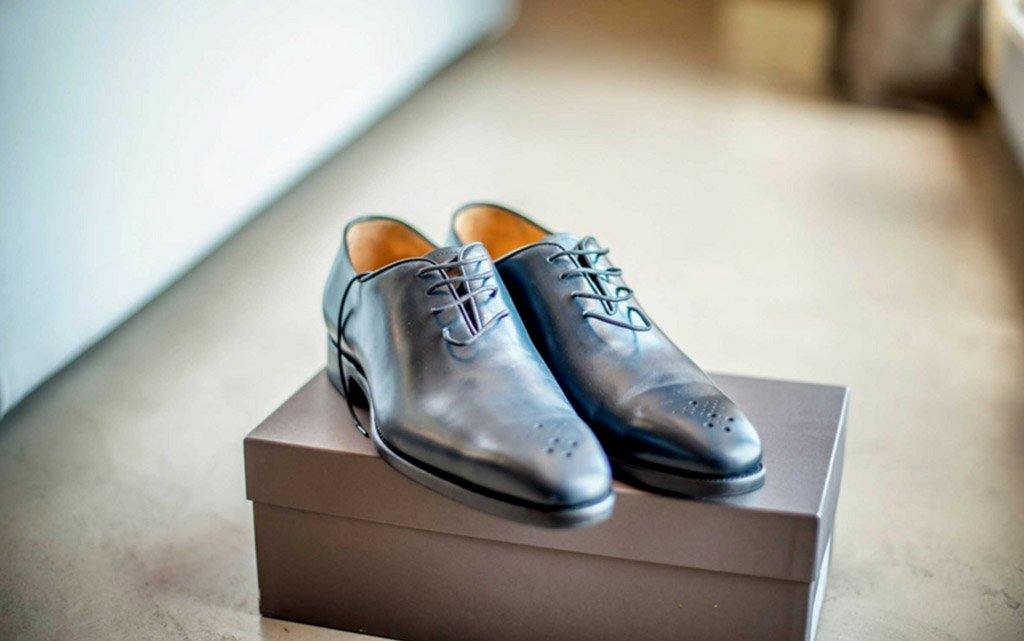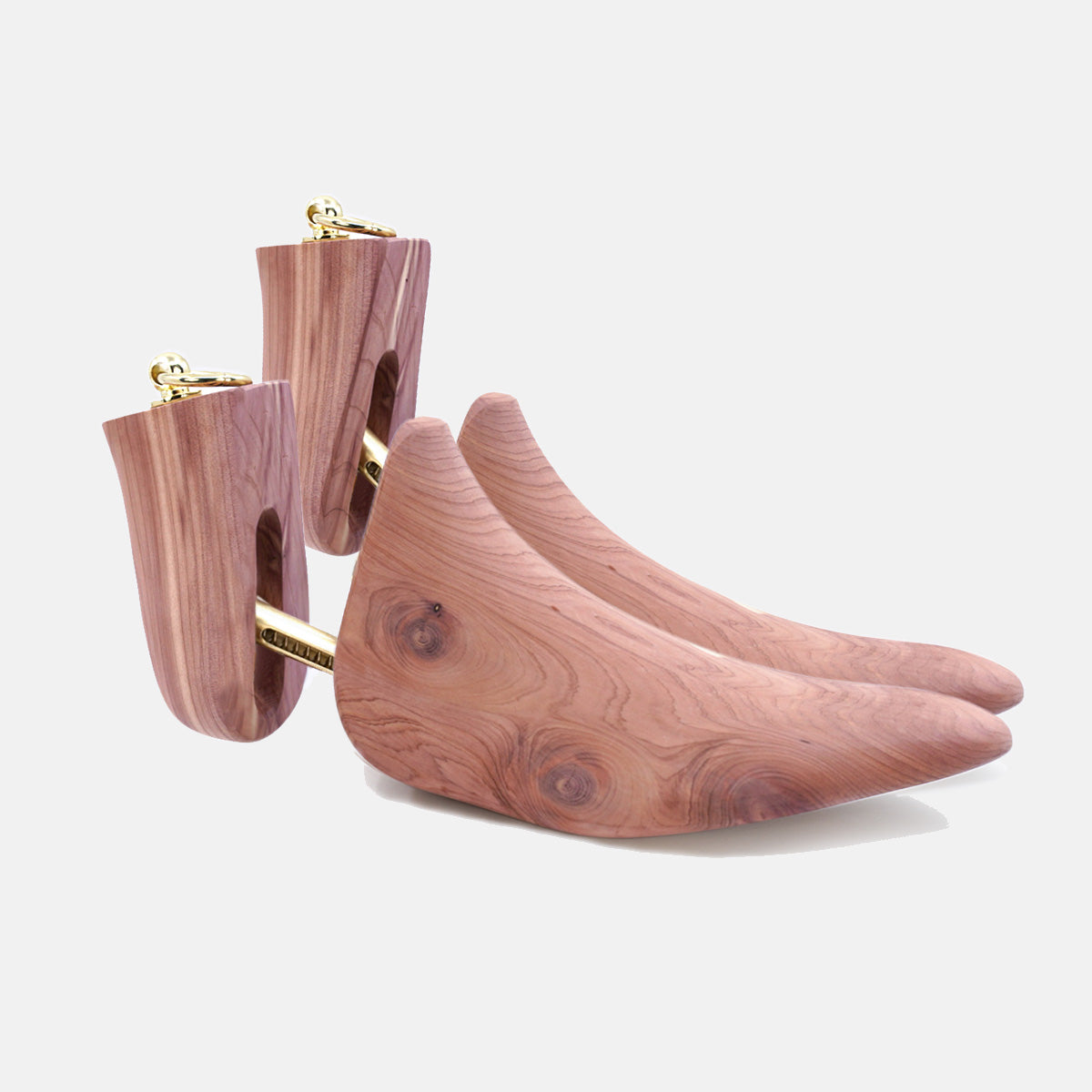Get 10% Off - Auto Applied At Checkout
Get 10% Off - Auto Applied At Checkout
Shoe Trees
shoe stretchers
Sets

Tips For Buying Men's Dress Shoes
October 04, 2017 4 min read
Men buy shoes for a variety of reasons. Style, utility, interest, I can go on. But two considerations that every man would agree is important when purchasing dress shoes is that the shoe fits well and will not fall apart within months of purchase. Ill-fitting shoes are often uncomfortable and bad for foot health. Poorly constructed shoes will need to be replaced regularly and this can be costly over time. Below are six tips that will help you find the right pair and prevent buyer's remorse.
1. Always have your feet measured
Have your feet measured in store, even if you’re confident about your size. Our feet can change shape over time and it is not uncommon for a fellow to be wearing the wrong sized shoe for a number of years.
The Bannock Device is the industry standard used to measure the length, width and height of your foot. It is handy to know your Bannock size, but understand that shoemakers don't conform to a universal sizing, so it is quite common for your Bannock size and the shoe to not precisely correspond.
The shoe's last is a very important factor in selecting the right size and fit. The last is a wooden mould of the shoe that determines its shape, width and height. On forums such as StyleForm, Ask Andy and Sub Reddit Goodyearwelt, you will find many threads and resources dedicated to providing information on the true fit of a particular shoe - usually comparing one's Bannock size with the shoe's last.
2. Try before you buy.. or take your chances
 Photo @ Kazuna formally on Pitt Street, Sydney
Photo @ Kazuna formally on Pitt Street, Sydney
It is always safer to try on the shoes before you buy them. However, the online retail space offers Australian men a greater range of quality shoe products at highly competitive prices, providing them with greater choice, flexibility and convenience, without geographical boundaries. This is all great, until the shoe doesn't fit. For the risk adverse, find a quality local seller (see links in resources below), who will have the products, knowledge and experience to help you with the fitting. Or if you do wish to take your chances online, do heed the advice provided herein, and do your research.
3. Ensure the shoe fits correctly
According to Berhard Roetzel, renowned Gentleman's style scribe and author of A Guy's Guide to Shoes, there are several key things to look for in a well-fitting shoe. The shoe will enclose snuggly around the middle of your foot. It should not be tight (regardless what the salesman says) or pinch, but enclosed enough so that the foot does not slip forward. The toes will have enough room at the front of the shoe but will never touch the inside of your toe cap. You may also consider using the socks you normally wear. It makes sense to use your larger foot and while we're on the subject, your feet usual swell in the afternoon, so a PM fitting may be the smart move.
4. Know what shoe style fits your foot's shape
Men's shoe styles can be organised into 50 different categories. Different shoe styles are better suited for different foot shapes. People with high insteps or wide feet will feel cramped by a closed lace shoe, such as the Oxford. On the other hand, a shoe with open lacing, such as the Derby, will often be a better fit for a wider foot. For those with high insteps, a monk shoe with a double buckle will allow you to control the distribution of pressure more evenly. Conversely, slip-on shoes rely on a tighter fitting instep in order to prevent the foot from moving about. For more on the different shoe styles and their fit, check out Glen Tippets comprehensive gallery via the very informative Old Leather Shoe blog.
5. Always use natural material over synthetic
The benefits of natural over synthetic material are many. According to Roetzel, natural uncorrected leather will last longer, will breath more and will look better with age. To be classified as “leather” or “genuine leather”, the hide has to be processed without intervention. Scraps of leather ground up using some sort of adhesive is a synthetic leather. Common among cheaper shoes is the use of “top grain” leather, whereby the top layer of the leather is scrapped away and replaced with a coat, usually plastic. A full-grain leather is an uncorrected leather (i.e. no imperfections) that will cost more but last a lot longer and actually look better with age. If you suffer from sweaty feet, you should only wear shoes where the upper, the lining and the inner sole are made from leather.
6. Welt Over Cement Construction
A welted construction - the method through which the sole is sewn to the upper of the shoe - will generally last longer than a cemented one. A welted shoe can often be resoled and will last for decades if well maintained. A cemented shoe, on the other hand, is held together by glue and not designed for durability. Shoe nerds tend to see the 'Goodyear Welt' as the gold standard of shoe construction. Blake Welt and Blake Rapid methods get honourable mentions, but there is a general belief that the Goodyear Welt is more comfortable and easier to resole. On the other hand, a quality Blake constructed shoe will often look sleeker and is a better option if orthotics are required.

However, like any manufactured product, the quality of the construction will depend on the quality of the factory making it. As such, it should not be a sole criterion to assessing a shoe's quality. But as a general rule, welt over cement for durability and breathability.
Further Reading & Resources
A Harris, 2003, Shoes Explained, in StyleForum.
Brent, Lyn, 2009, Goodyear Welted Footwear, SATRABulletin July/Aug.
Berhard Roetzel, 2013, A Guy's Guide to Shoes, DE, Ullmann Publishing.
Gamboa, A., 2016, A Guide To Sydney's Best Shoe Stoes. D'Marge.
Gamboa, A., 2016, A Guide To Melbourne's Best Shoe Stores. D'Marge.
Goodyearwelt, 2016-17, Manufacturer Last Sizing Thread, in Reddit.
Green, D., 2016, 6 tell-tale signs your dress shoes don't fit. Business Insider Australia.
Guzy, T., 2014, Understanding Shoe Construction: Goodyear Welt, Blake Stitch, & Cementing. PrimerMagazine.com
Tippets, G., 2012, Shoe Types and Styles, Old Leather Shoe.
Tippets, G. 2013, Leather 101, Old Leather Shoe.
Subscribe
Sign up to get the latest on sales, new releases and more …












